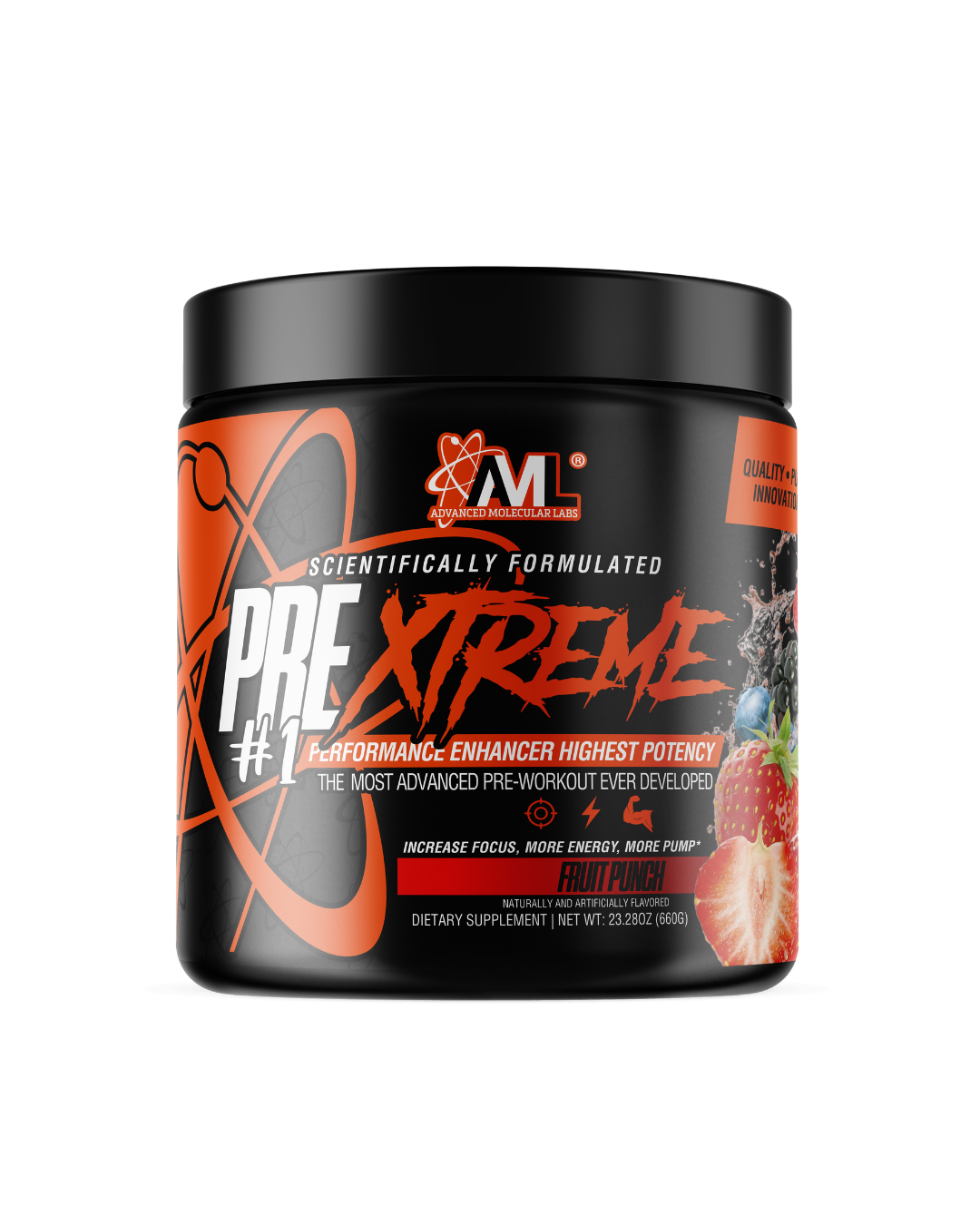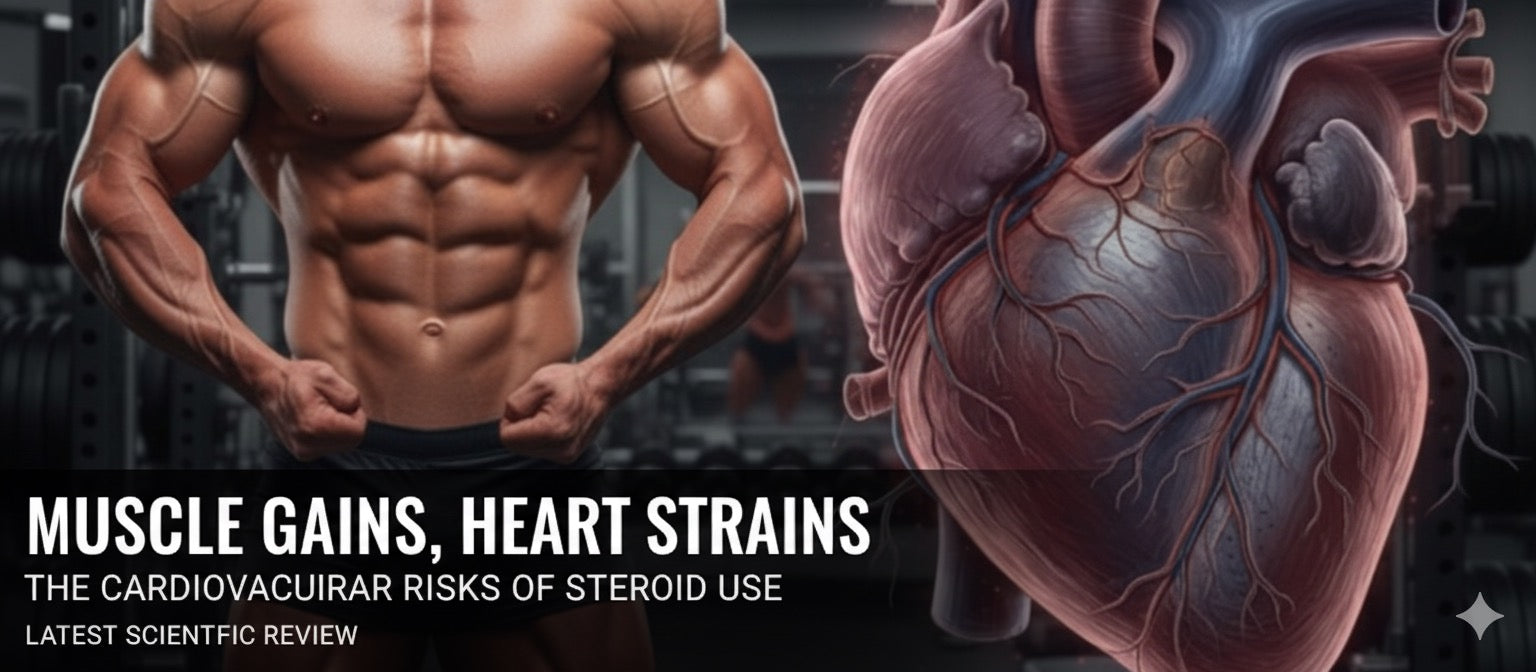


Stimulant Warning: "Stim Bombs: Cracked Out!"
By Robert Schinetsky
Ask a group of people what’s the one “must have” ingredient in pre workout supplements, and the overwhelming response will most likely be caffeine.
Now, since pre workouts are supplements, there “technically” isn’t any single “must-have” ingredient, but there’s no mistaking the benefits that caffeine can impart.
It is quite simply the most well-researched stimulant in sports nutrition that consistently shows benefits across a wide range of physical activities.
We’ve discussed caffeine at length before, but to highlight the benefits, research indicates that supplementing with caffeine may[1,2,3,4,5,6]:
- Increase work output
- Boost resistance to fatigue
- Improve performance following poor sleep
- Enhance strength & power output
- Boost muscular endurance
Caffeine (like other stimulants) also increases alertness, mood, focus, and motivation while reducing mental fatigue.
What’s more is that not only is caffeine effective for enhancing sports performance, improving mental energy, supporting weight loss, and making just about everything else in daily life better, it’s also safe when used in moderate amounts (400mg caffeine for the average individual, which is ~6mg/kg for a 65-kg individual).[7,8,9]
The most commonly investigated and well-accepted dosage of caffeine supplementation for improving performance is between 3-6mg/kg consumed 60 minutes prior to training.[10] This amount of caffeine can result in an improvement in performance between 1-8%.
Now, this isn’t to say that higher (or lower) doses of caffeine cannot be effective. They most certainly can be. In fact, some research indicates that up to 9mg/kg of caffeine can improve performance.[11,12]
It’s just that for the average individual, the preponderance of evidence suggests the optimal range is to dose caffeine between 3-6mg/kg. Obviously, there is room of variation and some people may need more while others far less, but the “sweet spot” for caffeine in terms of averages is 3-6mg/kg.
A recently published review by noted researcher Dr. Jozo Grgic titled “Effects of Caffeine on Resistance Exercise: A Review of Recent Research” noted that:
“Consuming lower doses of caffeine (e.g., 2-3 mg/kg) appears to be comparably ergogenic to consuming high doses of caffeine (e.g., 6 mg/kg).”[15]
One other thing to keep in mind though is that lower doses of caffeine (3mg/kg) may be more favorable for cognition and brain activation when compared to moderate (6mg/kg) and higher (9mg/kg) doses.[13]
Note: we’ve probably all experienced this a time or two when drinking too much coffee or pre-workout and then trying to sit down and focus on a cognitively-demanding task. You feel stimulated, but a bit too hyper to actually get anything productive accomplished.
For these reasons, AML PreWorkout and AML PreWorkout X-treme contain 400mg caffeine anhydrous per serving. This dose is in line with the research as well as within the FDAs daily intake limits.[14]
Be that as it may, society (and the sports nutrition sector in particular) is almost always of the mindset that more is better.
This is why we constantly see an influx of these self-proclaimed “stim bomb” pre workouts -- an absurd amalgamation of various “exotic” stimulants all bolstered by a heaping helping of caffeine (typically in excess of 350-400mg caffeine).
These “exotic” stimulants commonly found in pre workouts (as well as fat burners), includes, but is not limited to:
- 2-aminoisoheptane (DMHA)
- Eria jarensis
- Halostachine
- Higenamine
- Hordenine
- Isopropylnorsynephrine
- Methyl-synephrine (m-synephrine)
- N-Phenethyl Dimethylamine Citrate
- Rauwolfia vomitoria root extract (aka alpha-yohimbine)
Even something as frequently utilized as yohimbine still has no conclusive evidence that it leads to significantly better improvements in bodybuilding, exercise performance, fatigue management or desirable alterations of body mass (losing body fat).[21]
And, we realize that taking a massive “hit” of stims may feel good to some people at first, but it’s highly debatable whether or not this intense stimulus actually benefits athletic performance, which is the entire reason that pre workout were created in the first place -- to help you train better and make more gains!
Something else to keep in mind is that these crazy combinations of stimulants have little to no human safety data. Nevermind the fact that these combinations of stimulants are also lacking a robust body of evidence detailing their ability to enhance performance.
Still, countless pre workouts that seep into the market contain these stimulants. It just does not make sense from an athletic performance (or general health) point of view.
Sure, taking a pre workout or fat burner that contains a fistful of stims might make you feel “hardcore,” and you might even get a bit of euphoria from the combination, but there’s no guarantee that you will actually perform better in your training and/or won’t experience some kind of horrendous energy crash shortly after taking them.
Yet another factor at play is the quality and dosage of the ingredients in these “stim bombs.” We have several pieces of evidence over the past few years showing that supplements containing various exotic stimulants do not meet supplement facts panel claims.[16,17,18,19]
Taking unknown doses of unknown stimulants (especially in combination as is the case with stim bomb pre workouts) can lead to a host of undesirable effects, including[20]:
- Increased heart rate
- Vasoconstriction
- Increased blood pressure
- Increased body temperature
- Elevated breathing rate
- Tachycardia
This is why, as the consumer, it’s imperative to support quality supplement companies that source quality ingredients and work with reputable manufacturers.
Caffeine has been studied extensively and demonstrated to be effective. It’s also been shown to be safe when used in moderate (and even higher) doses.
If you’re looking for another stimulant to “stack” with caffeine, then p-synephrine may be an option.
It is one of the very few stimulants to be studied in combination with caffeine and shown to not only be beneficial but safe.[22,23] The combination of synephrine + caffeine has been found to increase:
- energy expenditure
- post exercise oxygen uptake
- fat oxidation
- improvements in repetition performance and volume load during training
More importantly, p-synephrine possesses virtually no binding affinity for α-1 and α-2 as well as β-1 and β-2 adrenoreceptors.[24]
This means that p-synephrine will not adversely impact cardiovascular factors (elevated heart rate, blood pressure, etc.) It does, however, interact with the β-3 adrenoreceptor, which leads to increased metabolic rate and lipolysis, and it may also help reduce food intake, which benefits fat loss.
AML PreWorkout X-treme contains the research-supported dose of 100mg of p-synephrine (as AdvantraZ).
Takeaway
At the end of the day, health and well-being (nevermind athletic performance and “gains”) shouldn't be placed in jeopardy out of the sheer desire to get a “high” from your pre workout supplement.
Untested combinations of unproven/unverified supplements can leave you at considerable risk, both mentally and physically.
Invest in companies that use quality ingredients and work with reputable manufacturers. This way you minimize the chance of adverse effects from the products you take and continue to make strides to improve your health, fitness, and physique.
References
- Doherty, M., & Smith, P. M. (2005). Effects of caffeine ingestion on rating of perceived exertion during and after exercise: a meta-analysis. Scandinavian Journal of Medicine & Science in Sports, 15(2), 69–78. https://doi.org/10.1111/j.1600-0838.2005.00445.x
- Goldstein ER, Ziegenfuss T, Kalman D, et al. International society of sports nutrition position stand: caffeine and performance. J Int Soc Sports Nutr. 2010;7(1):5. doi:10.1186/1550-2783-7-5.
- Richardson, D. L., & Clarke, N. D. (2016). Effect Of Coffee And Caffeine Ingestion On Resistance Exercise Performance. Journal of Strength and Conditioning Research / National Strength & Conditioning Association. https://doi.org/10.1519/JSC.0000000000001382
- Da Silva, V. L., Messias, F. R., Zanchi, N. E., Gerlinger-Romero, F., Duncan, M. J., & Guimaraes-Ferreira, L. (2015). Effects of acute caffeine ingestion on resistance training performance and perceptual responses during repeated sets to failure. The Journal of Sports Medicine and Physical Fitness, 55(5), 383–389.
- Warren GL, Park ND, Maresca RD, McKibans KI, Millard-Stafford ML. Effect of caffeine ingestion on muscular strength and endurance: a meta-analysis. Med Sci Sports Exerc. 2010;42(7):1375-1387. doi:10.1249/MSS.0b013e3181cabbd8.
- Grgic, J., Trexler, E. T., Lazinica, B., & Pedisic, Z. (2018). Effects of caffeine intake on muscle strength and power: a systematic review and meta-analysis. Journal of the International Society of Sports Nutrition, 15(1), 11. http://doi.org/10.1186/s12970-018-0216-0
- Del Coso J, Salinero JJ, González-Millán C, Abián-Vicén J, Pérez-González B. Dose response effects of a caffeine-containing energy drink on muscle performance: a repeated measures design. J Int Soc Sports Nutr. 2012;9(1):21. Published 2012 May 8. doi:10.1186/1550-2783-9-21
- Astorino, T. A., Terzi, M. N., Roberson, D. W., & Burnett, T. R. (2010). Effect of two doses of caffeine on muscular function during isokinetic exercise. Medicine and Science in Sports and Exercise, 42(12), 2205–2210. https://doi.org/10.1249/MSS.0b013e3181e3a11d
- Nawrot P, Jordan S, Eastwood J, Rotstein J, Hugenholtz A, Feeley M. Effects of caffeine on human health. Food Addit Contam. 2003 Jan;20(1):1-30. doi: 10.1080/0265203021000007840. PMID: 12519715.
- Martins GL, Guilherme JPLF, Ferreira LHB, de Souza-Junior TP, Lancha AH Jr. Caffeine and Exercise Performance: Possible Directions for Definitive Findings. Front Sports Act Living. 2020;2:574854. Published 2020 Dec 11. doi:10.3389/fspor.2020.574854
- Pickering C., Kiely J. (2018). Are the current guidelines on caffeine use in sport optimal for everyone? Inter-individual variation in caffeine ergogenicity, and a move towards personalised sports nutrition. Sports Med. 48, 7–16. 10.1007/s40279-017-0776-1
- Pickering C., Kiely J. (2019). Are low doses of caffeine as ergogenic as higher doses? A critical review highlighting the need for comparison with current best practice in caffeine research. Nutrition67:110535. 10.1016/j.nut.2019.06.016
- Zhang B., Liu Y., Wang X., Deng Y., Zheng X. (2020). Cognition and brain activation in response to various doses of caffeine: a near-infrared spectroscopy study. Front. Psychol. 11:1393. 10.3389/fpsyg.2020.01393
- https://www.fda.gov/consumers/consumer-updates/spilling-beans-how-much-caffeine-too-much
- Grgic J. Effects of Caffeine on Resistance Exercise: A Review of Recent Research. Sports Med. 2021 Nov;51(11):2281-2298. doi: 10.1007/s40279-021-01521-x. Epub 2021 Jul 22. PMID: 34291426.
- Cohen PA, Travis JC, Venhuis BJ. A synthetic stimulant never tested in humans, 1,3-dimethylbutylamine (DMBA), is identified in multiple dietary supplements. Drug Test Anal. 2015 Jan;7(1):83-7. doi: 10.1002/dta.1735. Epub 2014 Oct 8. Erratum in: Drug Test Anal. 2015 Jan;7(1):88. PMID: 25293509.
- Cohen PA, Travis JC, Vanhee C, Ohana D, Venhuis BJ. Nine prohibited stimulants found in sports and weight loss supplements: deterenol, phenpromethamine (Vonedrine), oxilofrine, octodrine, beta-methylphenylethylamine (BMPEA), 1,3-dimethylamylamine (1,3-DMAA), 1,4-dimethylamylamine (1,4-DMAA), 1,3-dimethylbutylamine (1,3-DMBA) and higenamine. Clin Toxicol (Phila). 2021 Nov;59(11):975-981. doi: 10.1080/15563650.2021.1894333. Epub 2021 Mar 23. Erratum in: Clin Toxicol (Phila). 2022 Jan 13;:1. PMID: 33755516.
- Pieter A. Cohen, John C. Travis, Peter H. J. Keizers, Patricia Deuster & Bastiaan J. Venhuis (2018) Four experimental stimulants found in sports and weight loss supplements: 2-amino-6-methylheptane (octodrine), 1,4-dimethylamylamine (1,4-DMAA), 1,3-dimethylamylamine (1,3-DMAA) and 1,3-dimethylbutylamine (1,3-DMBA), Clinical Toxicology, 56:6, 421-426, DOI: 1080/15563650.2017.1398328
- Pieter A. Cohen, John C. Travis, Peter H. J. Keizers, Frederick E. Boyer & Bastiaan J. Venhuis (2018) The stimulant higenamine in weight loss and sports supplements, Clinical Toxicology, DOI: 10.1080/15563650.2018.1497171
- Paolo Emilio Adami, Nikolaos Koutlianos, Aaron Baggish, Stéphane Bermon, Elena Cavarretta, Asterios Deligiannis, Francesco Furlanello, Evangelia Kouidi, Pedro Marques-Vidal, Josef Niebauer, Antonio Pelliccia, Sanjay Sharma, Erik Ekker Solberg, Mark Stuart, Michael Papadakis, Cardiovascular effects of doping substances, commonly prescribed medications and ergogenic aids in relation to sports: a position statement of the sport cardiology and exercise nucleus of the European Association of Preventive Cardiology, European Journal of Preventive Cardiology, 2022;, zwab198, https://doi.org/10.1093/eurjpc/zwab198
- Cimolai N, Cimolai T. Yohimbine use for physical enhancement and its potential toxicity. J Diet Suppl. 2011 Dec;8(4):346-54. doi: 10.3109/19390211.2011.615806. Epub 2011 Oct 21. PMID: 22432773.
- Ratamess NA, Bush JA, Kang J, et al. The effects of supplementation with P-Synephrine alone and in combination with caffeine on resistance exercise performance. Journal of the International Society of Sports Nutrition. 2015;12:35. doi:10.1186/s12970-015-0096-5.
- Ratamess NA, Bush JA, Kang J, et al. The Effects of Supplementation with p-Synephrine Alone and in Combination with Caffeine on Metabolic, Lipolytic, and Cardiovascular Responses during Resistance Exercise. J Am Coll Nutr. 2016;35(8):657-669. doi:10.1080/07315724.2016.1150223.
- Stohs SJ, Preuss HG, Shara M. A review of the receptor-binding properties of p-synephrine as related to its pharmacological effects. Oxid Med Cell Longev. 2011;2011:1– doi: 10.1155/2011/482973.






